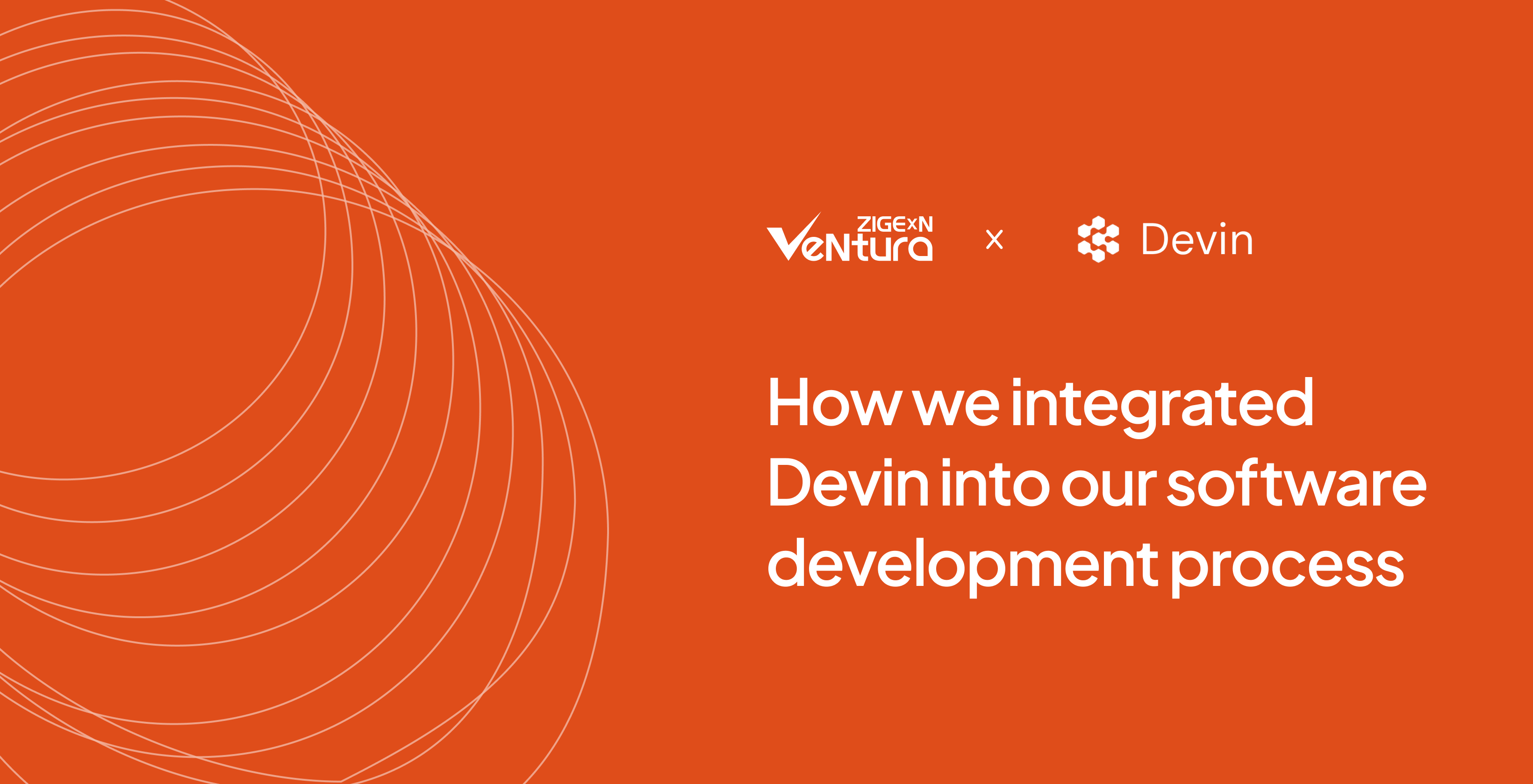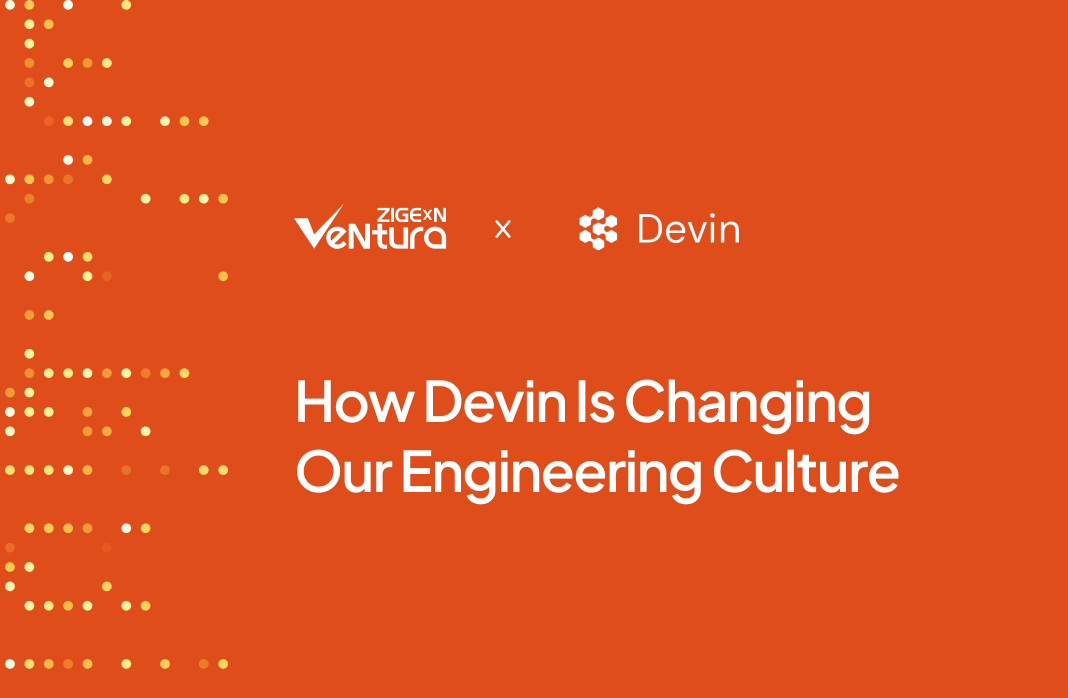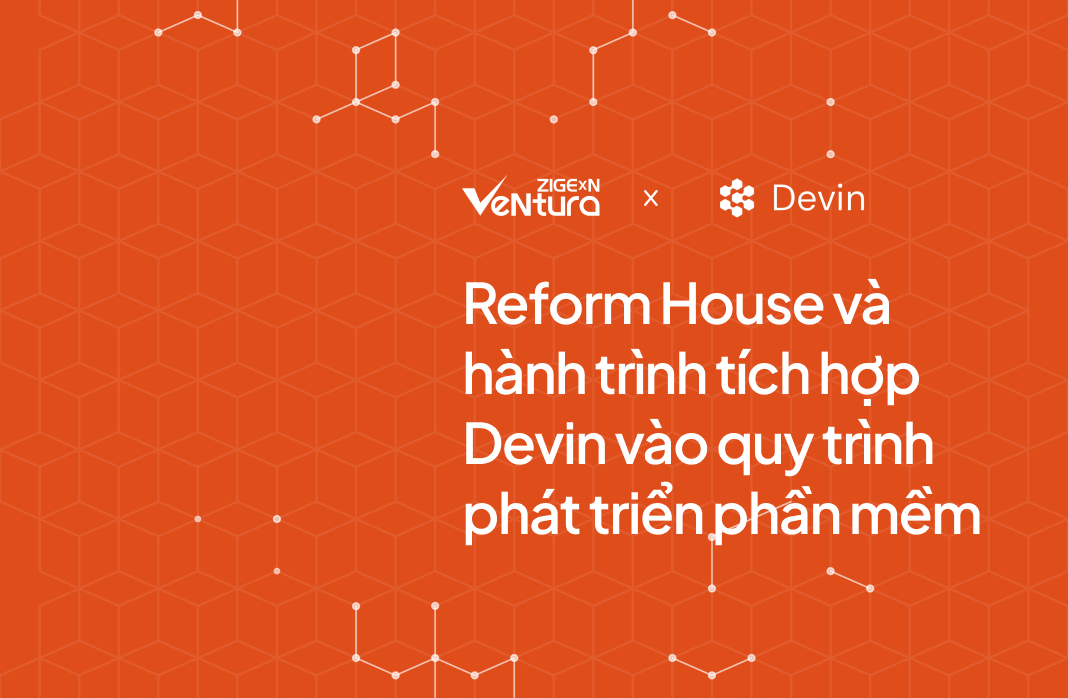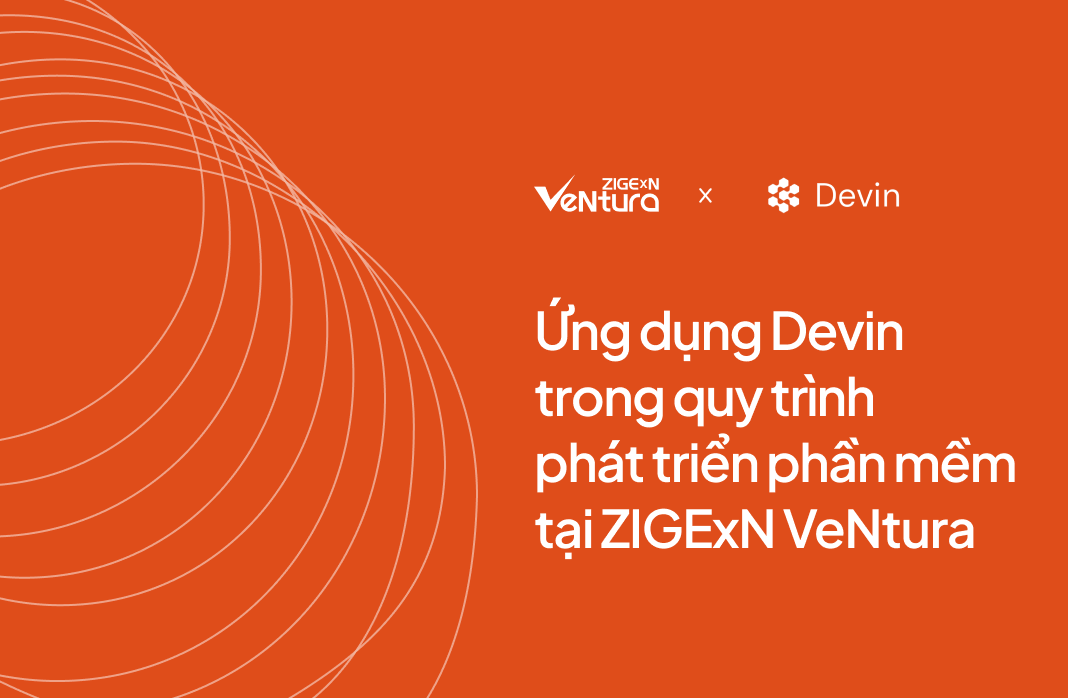In early 2025, the global momentum around AI and autonomous agents was impossible to ignore. At ZIGExN VeNtura, we faced a familiar engineering challenge: how can we shorten development time without sacrificing quality? Our team has always delivered high performance, but as our systems and team size grew, traditional tools began to show their limits. Inconsistent reviews, repeated errors, and limited automation made it clear that we needed a smarter approach.
Instead of waiting, our Vietnam team took initiative. While initial reactions to Devin ranged from curiosity to skepticism (some even joked it was a “tech scam”), our pilot project quickly proved Devin was far more than hype. It became a reliable engineering partner.
Why Devin?
Before settling on Devin, we explored a few alternatives like Coderabbit and Greptile. While promising, these tools required extensive setup and struggled to adapt to our unique workflows and existing codebases.
Devin stood out.
It understood business logic, adapted quickly to various tech stacks, and fit naturally into our daily workflow. It also integrated smoothly with Slack, GitHub, and VSCode. More importantly, Devin could be customized to align with each team’s working style, which most other tools could not offer.
How We’re Using Devin in Development
We’ve integrated Devin across several critical stages of our development process:
- Requirement Analysis: Devin helps clarify vague or incomplete tickets, especially those submitted by non-technical stakeholders.
- Coding: It provides smart, context-aware code suggestions even within legacy systems.
- Code Review: Devin automatically comments on pull requests. Initially, it was too polite—“overpraising” good code. But with tuning, it now delivers constructive, standards-aligned feedback.
- Testing: Devin generates meaningful test cases aligned with business logic, freeing up QA bandwidth.
Currently, Devin supports developers and BrSEs, but we’re exploring ways to involve QA, PMs, and even internal clients.
A Strategic, Phased Rollout
Rather than a one-size-fits-all deployment, we followed a clear strategy:
- R&D Pilot: A small test project helped us understand Devin’s strengths and build internal guidelines.
- Senior Developer Trial: Hands-on feedback helped refine use cases and onboarding.
- Team-Level Playbooks: Each team created its own “Devin playbook” to ensure the tool adapted to their context.
- Company-wide Launch: With support from team leads and mentors, Devin became part of daily development.
Thanks to this phased approach, most developers become comfortable using Devin in just 1–2 weeks.
Impact So Far
Since being introduced, Devin has brought noticeable improvements across our development process.
Requirement analysis is now clearer and faster, helping teams move more confidently from task to execution. Developers feel more assured when submitting pull requests, knowing that Devin provides an initial round of review. This early feedback has reduced the time needed for human review and led to better code from the start.
By generating test cases aligned with business logic, Devin has helped our QA team cut their effort in writing tests by as much as 60 percent. Perhaps most importantly, the way teams work together has become more seamless, with greater consistency and alignment across roles.
Why It Works at ZIGExN VeNtura
A tool like Devin doesn’t succeed on its own. It thrives in the right environment. At ZIGExN VeNtura, strong support from leadership laid the foundation, with AI recognized not just as a trend but as a core part of our long-term strategy.
We’ve built a culture that’s open to trying new technologies and eager to learn from them. Teams share knowledge freely, and our R&D group continuously adapts tools to better fit our context. This combination of mindset and structure is what turned Devin from an experimental pilot into a daily development partner.
What’s Next
While Devin is already delivering strong results, this is only the beginning. We plan to integrate it more deeply into our entire development ecosystem, from CI/CD pipelines to DevOps automation. There are also plans to experiment with other AI agents tailored for specific domains or roles, helping streamline everything from documentation to project management.
Of course, challenges remain. As with any system, Devin requires ongoing maintenance, especially as we scale it across more teams and projects. Knowledge bases and playbooks must evolve alongside the technology. There are also limitations to watch for. For example, Devin may occasionally misinterpret highly complex systems or generate responses that require further validation, particularly in environments with microservices or intricate architectures.
For junior developers, working with AI requires guidance. Mentorship and review remain essential to ensure that the technology enhances, rather than replaces, human decision-making.
Still, when thoughtfully implemented, Devin has shown that AI can be more than just a tool. It can be a true strategic partner in building software that’s faster, smarter, and more consistent. That’s exactly where we’re headed.






